Compacted Aggregate Pier & Compacted Soil Column
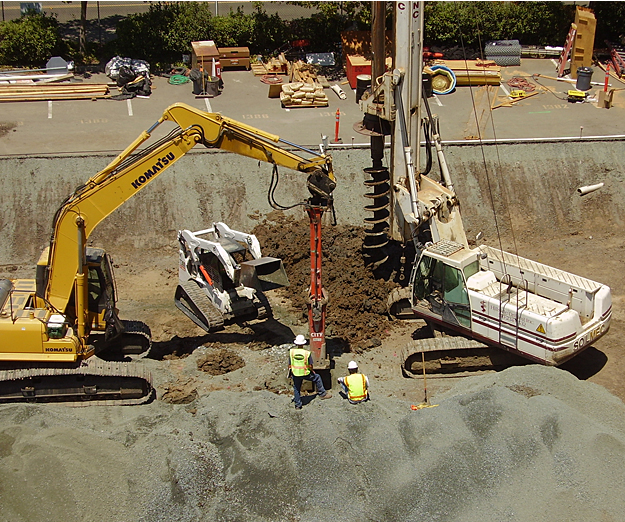
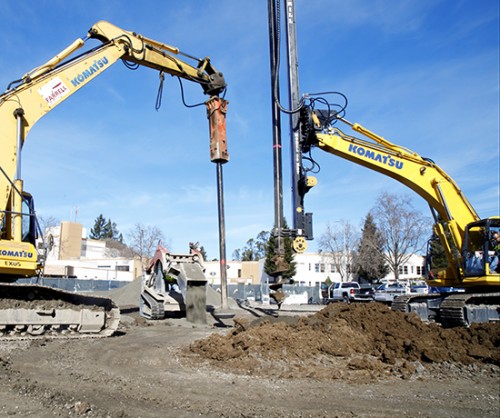
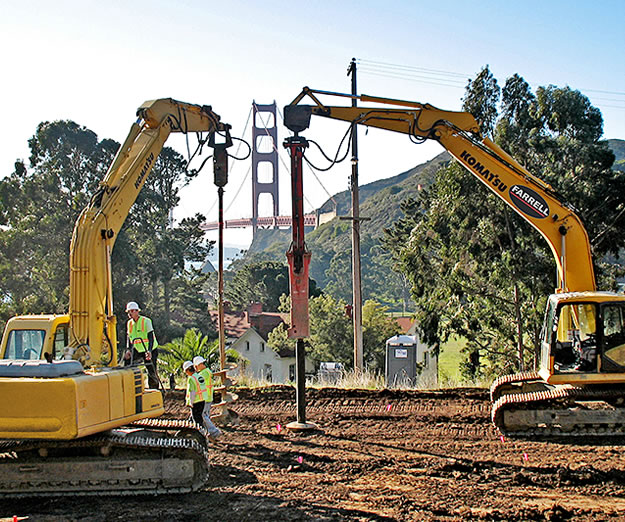
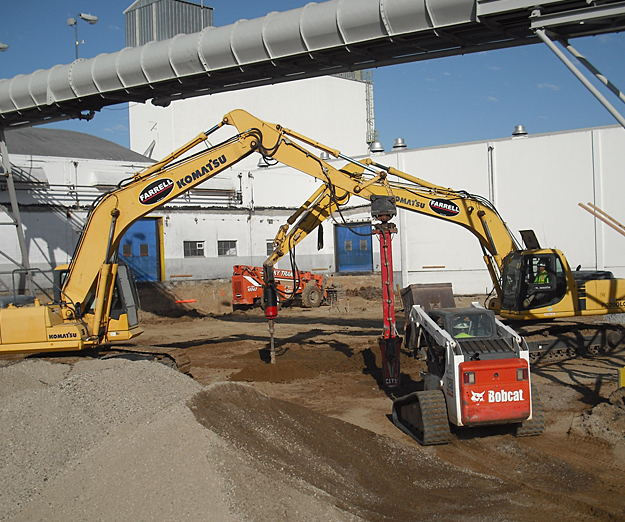
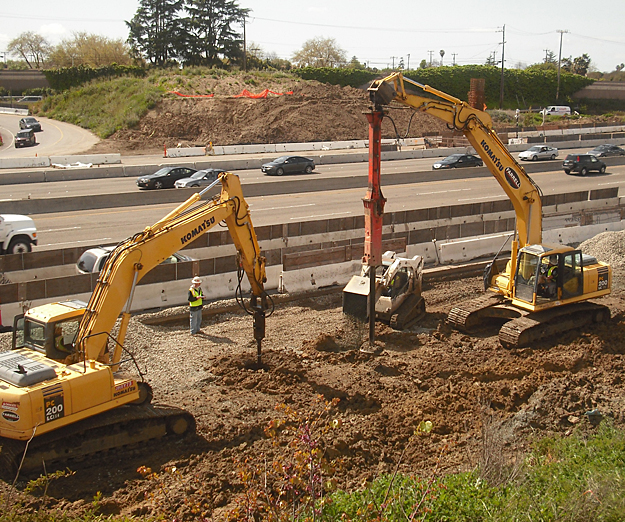
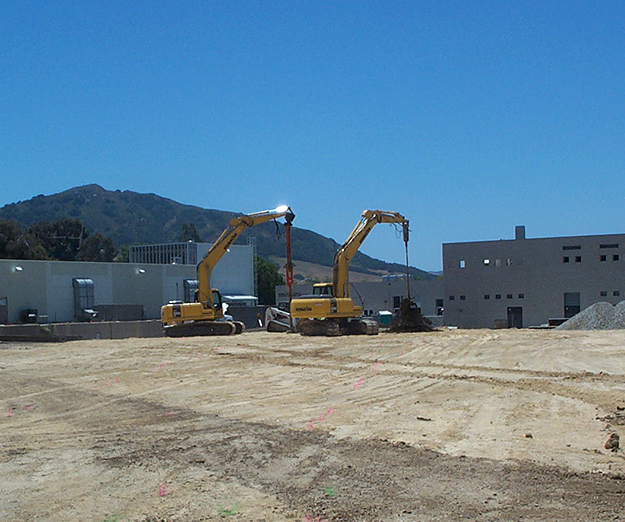
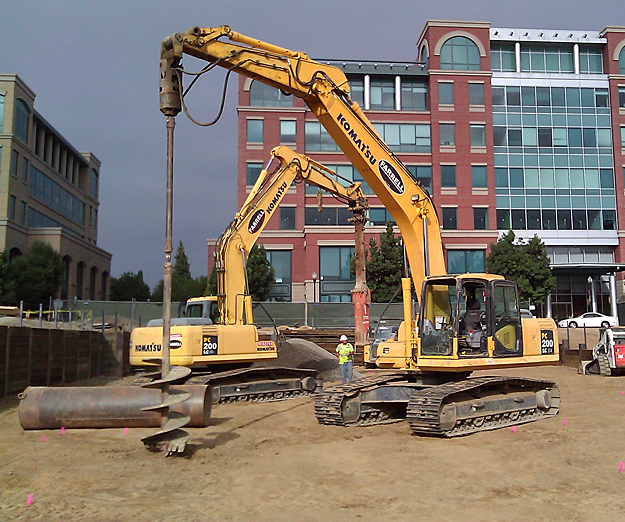
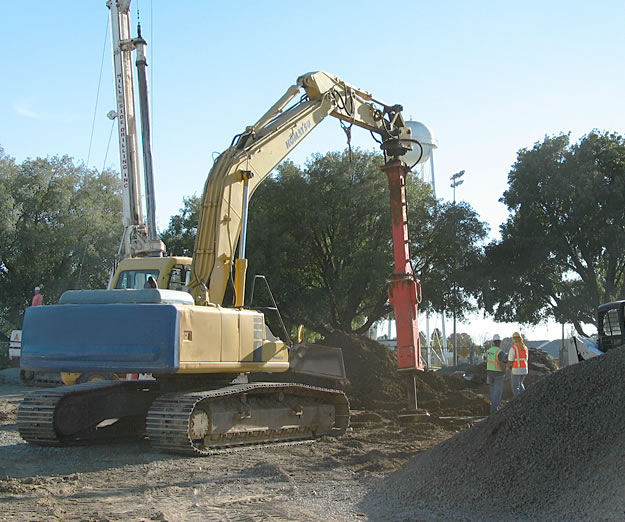
Overview
Compacted Aggregate Pier and Compacted Soil Column (CAP and CSC) are soil-replacement, ground improvement methods. CAP/CSC are like rammed piers, aggregate piers, sand piers, and compacted soil/soil-cement columns. CAP/CSC improve soft clays and silts, loose sands, undocumented fills, and compressible soil. The CAP/CSC process constructs strong, engineered, “composite ground” for the support of foundations and slabs. CAP/CSC improve the ground by vertical and horizontal compaction of lifts of select material like crushed rock, sand, recycled material, and soil-cement mixes. Compressible soil is drilled out and replaced with the select material that is rammed into dense compacted lifts that expand the drilled cavity. The ramming of the select material creates a cavity expansion effect that increases soil strength and stiffness, resulting in higher bearing capacity and reduced soil compressibility. CAP/CSC provide strong, composite ground to support conventional foundations, slabs, and mats with reduced settlement.
CAP/CSC Applications
Support foundations, structural mats, slabs, embankments, tanks, MSE walls, and industrial equipment. The ideal applications for CAP/CSC:
- Soft clay, silty clay, silty and sandy clay, and loose soil sites.
- Compressible soil sites.
- Undocumented fill sites.
- Gain LEED® points at sites with local and recycled concrete.
- Sites where drilled holes will stand open during construction.
- Sites near occupied buildings and in dense urban areas.
4-Step Construction Process
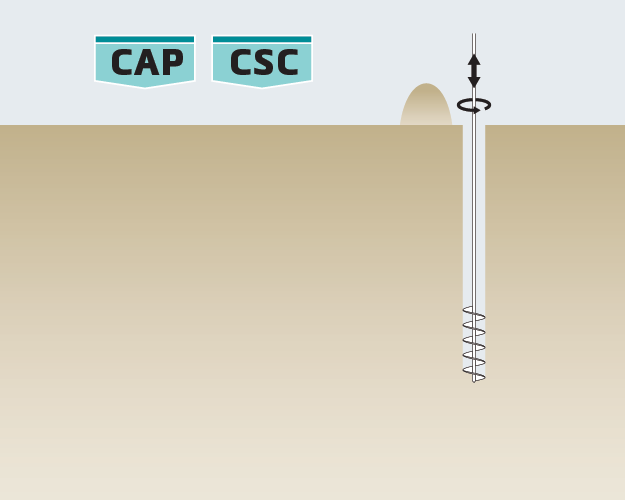
Drill hole to remove soft clay, loose sand, or undocumented fill.
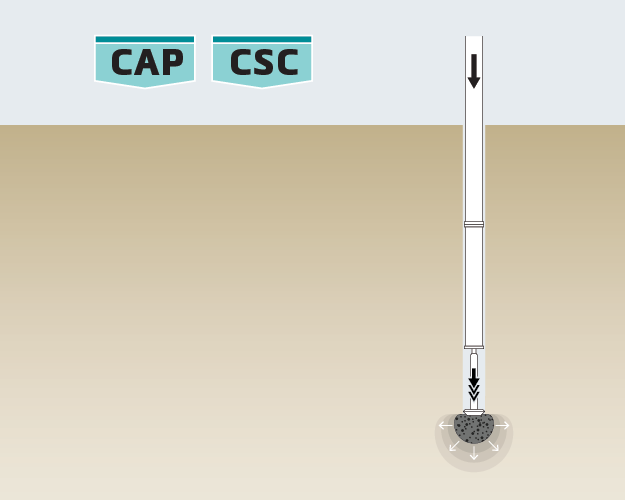
Load select material to ram and compact bottom bulb to 1 diameter below drilled hole.
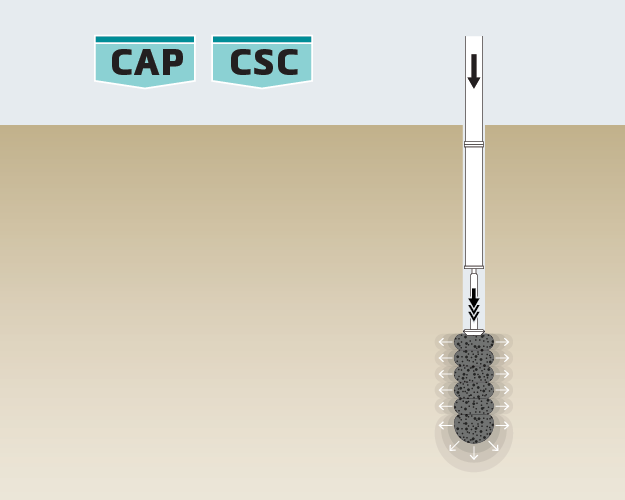
Load select material in lifts & ram and compact to install ground improvement at edge & form CAP/CSC.
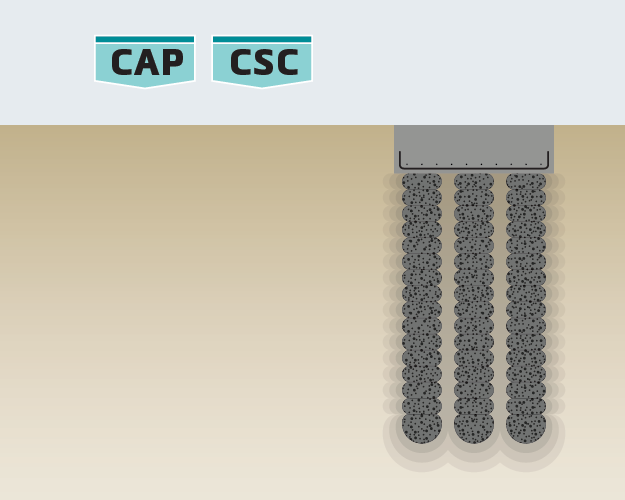
Finished CAP/CSC and ground improvement with footing and/or slab above.
Technical Details
Compacted Aggregate Pier and Compacted Soil Column (CAP and CSC) provide excellent ground improvement support of foundations and slabs. The CAP/CSC process uses rammed and compacted select material in a drilled hole to form strong, engineered, “composite ground.” Select materials include crushed rock, sand, recycled material, and engineered soil-cement mixes. The CAP/CSC compaction process is applied to each lift of select material. The compaction force causes the select material to compact and to press laterally into a drilled hole; resulting in a coarse-sided CAP/CSC with a finish diameter greater than the drill diameter. CAP/CSC produces cavity expansion effects on the adjacent soil that 1) increase lateral confining pressure, 2) increase shear strength, 3) increase over-consolidation ratio, 4) reduce void ratio, and 5) increase soil stiffness. As CAP/CSC composite ground is loaded, high friction forces at the edges resist load and transfer the footing stress out and lower into the soil profile. A CAP/CSC is akin to a stiff spring that is confined in a soft spring medium (the native soil), where the stiff spring will attract more load and resist compression by virtue of the very dense lifts of compacted select material.
Most CAP/CSC are 5 to 25 feet deep and occupy between 5% to 25% of the footing bottom. CAP/CSC installed with local and recycled materials qualify for sustainability and LEED® points. CAP/CSC can be equipped with steel anchors to resist net tension forces. Full-scale load tests to 200% confirm the design bearing capacity on all projects.
Farrell uses excavators with hydraulic hammer attachments to install CAP/CSC. The hamming tool is designed to compact an 18 to 24-inch thick lift of select material.
CAP/CSC diameters are 18, 24, and 30-inches. CAP/CSC are cost effective, settlement control, ground improvement systems that support your project to Go Vertical with Confidence®!
Testimonial
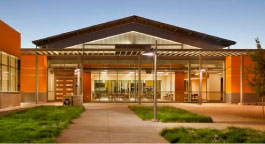
UC Davis Brewery/Winery and Food Pilot Facility
Davis, CA
“The recycled concrete content in the system really made this a double win as we saved money for the project instead of using concrete drilled piers and we enhanced sustainability for the project.”
John Westphal, SE
KPW Structural
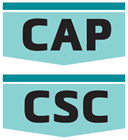
Compacted Aggregate Pier & Compacted Soil Column
Geologic Hazard Application

Soft/Loose Soil

Slope Stability
Diameter/Depth
- 18, 24, 30 in dia
- 6 – 32 ft deep
Compatible Soils
- Silt (ML, MH)
- Clay (CL, CH)
- Clayey Sand (SC)
- Silty Sand (SM)
- Undocumented Fill
Bearing Capacity Range
4,000 – 9,000 psf
Key Advantages
- Cost effective support
- Readily available material – CAP
- LEED opportunity
- Re-use onsite soil – CSC
- High bearing capacity
- Uplift-tension hold-down
Key Considerations
- Vibration system
- Requires confinement in liquefiable layers
- Spoil haul-off – CAP
- Semi-rigid inclusion
- Casing
- Moderate depth limit
Comparable To
- Overex/replace
- Concrete piers
- Driven piles
- Geopier®
- Soil mix columns

